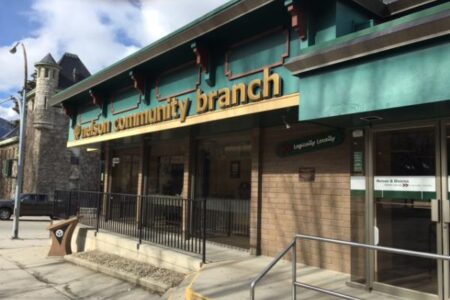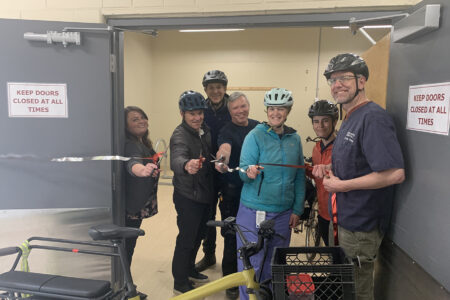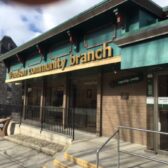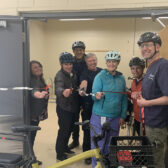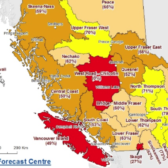Connectivity report finds six areas in regional district with service gap for high speed internet
Six areas in the regional district are underserved by high speed internet, according to a provincial report, but there may be more.
There has been recognized a service gap between urban and rural areas for high speed internet, according to the provincial report, Analysis of 106 Communities Regarding 50/10 Availability and Comparison to ISED Reported Data.
Many B.C. communities have reported discrepancies between the level of advertised broadband service speeds and the connectivity levels that community stakeholders experience on the ground.
The TANEx Engineering study found Appledale, Caribou Point, Perrys, Ross Spur, Salmo and Silverton all fell below the advertised fixed and mobile wireless internet service speeds. Although the report confirms and identifies areas that are underserved in the regional district, there may be many more, said Stuart Horn, RDCK chief administrative officer.
“The report was produced based on speed tests and a certain number of speed tests from the public were required and, unfortunately, for this survey, we don’t know what we don’t know,” he said. “If the public didn’t do the speed test the data would not be considered and we don’t know who may also be underserved.”
Baseline measurement
In 2016, the Canadian Radio-television and Telecommunications Commission (CRTC) established a universal service objective indicating that Canadians in urban, rural and remote environments should all have access to fixed and mobile wireless internet services at speeds of at least 50 megabits per second (Mbps) download speed and 10 Mbps upload speed (“50/10”).
“The objective was set to ensure all Canadians have access to high-quality telecommunications services, recognizing that there is a significant disparity between the service levels available in urban areas and those in rural and remote locations,” the report noted.
The decision emphasized that the “… speeds are to be actual speeds delivered, not merely advertised” — while also recognizing that a wide range of factors beyond the control of the internet service provider (ISP) can affect performance.
Source: Analysis of 106 Communities Regarding 50/10 Availability and Comparison to ISED Reported Data
“While most British Columbians live in urban centres where internet coverage is well established, many remote, rural, and less densely populated areas and Indigenous communities that are major contributors to our economy and food production, do not have access to basic high-speed internet to, for example, run a business or have a video call,” the report noted.
“This creates a digital divide between those who have reasonable access and those who do not.”
In response, the Ministry of Citizens’ Services partnered with the Union of B.C. Municipalities and the Northern Development Initiative Trust to undertake an internet speed study project to, “…better understand all of the factors contributing to the difference between Internet speed data published on the federal government’s National Broadband Internet Service Availability Map, and community experiences in BC.”
There was no announcement on what, if any, work would be done to rectify the discrepancy in the regional district. However, the report information could be used for organizations to apply for grant funding that has been set aside by the federal and provincial governments ($830 million).
As for the RDCK itself, it is currently involved in a project that is “putting backbone fibre up the Slocan Valley, another for backbone from Fruitvale through to Salmo to Nelson, and finally a project to improve connectivity along the East Shore of Kootenay Lake,” said Horn.
Environmental conditions
In Canada, ISPs operate their broadband networks on a “best effort” basis.
This means that they advertise and sell broadband internet access services “up to” certain performance thresholds, but the speed of the service delivered can deviate from the advertised target based on several factors including ISP network congestion, over-subscription, and other potential network issues inside the home such as outdated Wi-Fi router technologies or competing bandwidth consumption.
In the case of fixed wireless access networks, which are prominent in rural areas of Canada, there are numerous environmental conditions outside the home that affect performance including, but not limited to, interference from trees, leaves, hills, rain, snow, and wind.
Given all the factors that affect internet performance and measurement, no single internet method or technology provides the definitive word on the state of connectivity.
“It is acknowledged that consumer driven speed tests have inherent weaknesses such as competing traffic at the time of the speed test, use of the consumer’s network in conducting the speed test, subscribed internet service levels and quality of the equipment among others.”
However, despite these limitations, crowd-sourced internet performance testing tools can still provide observers with meaningful data about the relative state of connectivity.
Excerpt from: Analysis of 106 Communities Regarding 50/10 Availability and Comparison to ISED Reported Data






